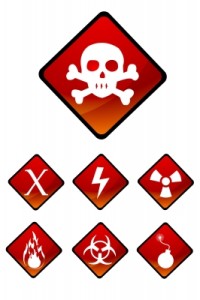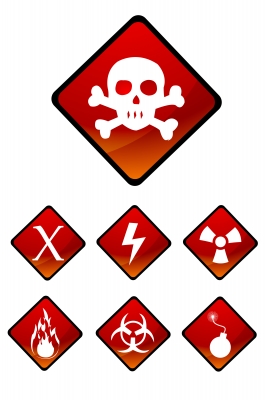 The handling of dangerous goods in the country’s ports complies with international guidelines, said the Philippine Ports Authority (PPA) in a statement issued on August 14, a day after massive explosions traced to a logistics warehouse handling dangerous goods rocked the port city of Tianjin in China.
The handling of dangerous goods in the country’s ports complies with international guidelines, said the Philippine Ports Authority (PPA) in a statement issued on August 14, a day after massive explosions traced to a logistics warehouse handling dangerous goods rocked the port city of Tianjin in China.
PPA general manager Atty. Juan Sta. Ana said the handling of dangerous goods hews to rules set out by the International Maritime Organization (IMO).
As of August 16, the Tianjin blasts, one of which was the equivalent of more than 20 tons of TNT exploding, have left at least 112 people dead, more than 700 injured and thousands homeless. The explosions destroyed tower blocks and buildings, mangled shipping containers, and burned thousands of cars.
Reports in Chinese media said the explosions occurred after a shipment of explosives detonated in a warehouse owned by Tianjin Dongjiang Port Rui Hai International Logistics Co., a company that stores and transports dangerous chemicals. Executives of the logistics company have been taken into custody, according to state media reports.
Questions have now been raised over whether firefighters responding to an initial blaze at the warehouse could have contributed to the detonations by spraying water over dangerous substances.
A team of 217 nuclear and biochemical materials specialists from the Chinese military was deployed to the site in the aftermath of the blasts.
Sta. Ana said PPA must comply with IMO standards “otherwise, vessel operators will drop calls (to) Manila due to noncompliance with international standards.”
The Philippines is also a signatory to the Association of Southeast Asian Nations (ASEAN) Protocol 9 of the ASEAN Framework Agreement on the Facilitation of Goods in Transit, which has provisions for the movement of dangerous goods on designated road (or inter-state highway) routes.
Cargo handling operators, particularly in the 10 gateway ports, likewise follow international best practices, Sta Ana said. “While we do not discount the possibility of accidents in the handling of dangerous goods, we can assure you that we comply strictly with the requirements, and guarantee safety of our ports the best possible (way) that we can,” he added.
Agencies overseeing PH dangerous goods handling
Aside from PPA, different government agencies oversee the transport and handling of dangerous goods in the country, according to PortCalls sources. The Philippine Coast Guard oversees such goods while they are on sea.
Once outside the port and travelling on land, it is the job of the Bureau of Fire Protection to oversee dangerous goods, the sources said. They, however, doubt if the said agency has adequate capability to deal with accidents that do not involve fire, such as biological hazards (eg, anthrax).
Dangerous goods fall under nine different classifications under the International Maritime Dangerous Goods Code: Class 1-Explosives; Class 2-Gases; Class 3-Flammable Liquids; Class 4-Flammable Solids; Class 5-Oxidizing Substances and Organic Peroxides; Class 6-Toxic and Infectious Substances; Class 7-Radioactive Material; Class 8-Corrosive Substances; and Class 9-Miscellaneous Dangerous Substances and Articles.
When the goods reach offdock warehouses, the oversight function rests with the Bureau of Customs (BOC).
Industry sources noted there seem to be no cohesive and harmonized national rules for handling of dangerous goods.
Since the BOC accredits offdock warehouses and customs bonded warehouses (CBWs), the sources said the agency is in the best position to institute standards for handling of dangerous goods in those facilities.
BOC earlier said it will review operations of offdock facilities and CBWs in line with a plan to adopt new standards of operations and improve the process of renewing accreditation of operators.
Association of International Shipping Lines president Patrick Ronas, in a text message to PortCalls, said he expects shipments to Tianjin port to be diverted to nearby ports such as Xingang and Dalian.
According to global trade and maritime news provider Journal of Commerce, Tianjin was the second most productive port in the world behind Dubai’s Jebel Ali. The port, however, was tied for first place with Chinese counterpart Qingdao in being the most productive in serving ships of over 8,000 twenty foot-equivalent units.
Tianjin handled 14.05 million twenty foot-equivalent units in 2014 and already processed 7.24 million TEUs in the first half of 2015. – Roumina Pablo
Image courtesy of digitalart at FreeDigitalPhotos.net





